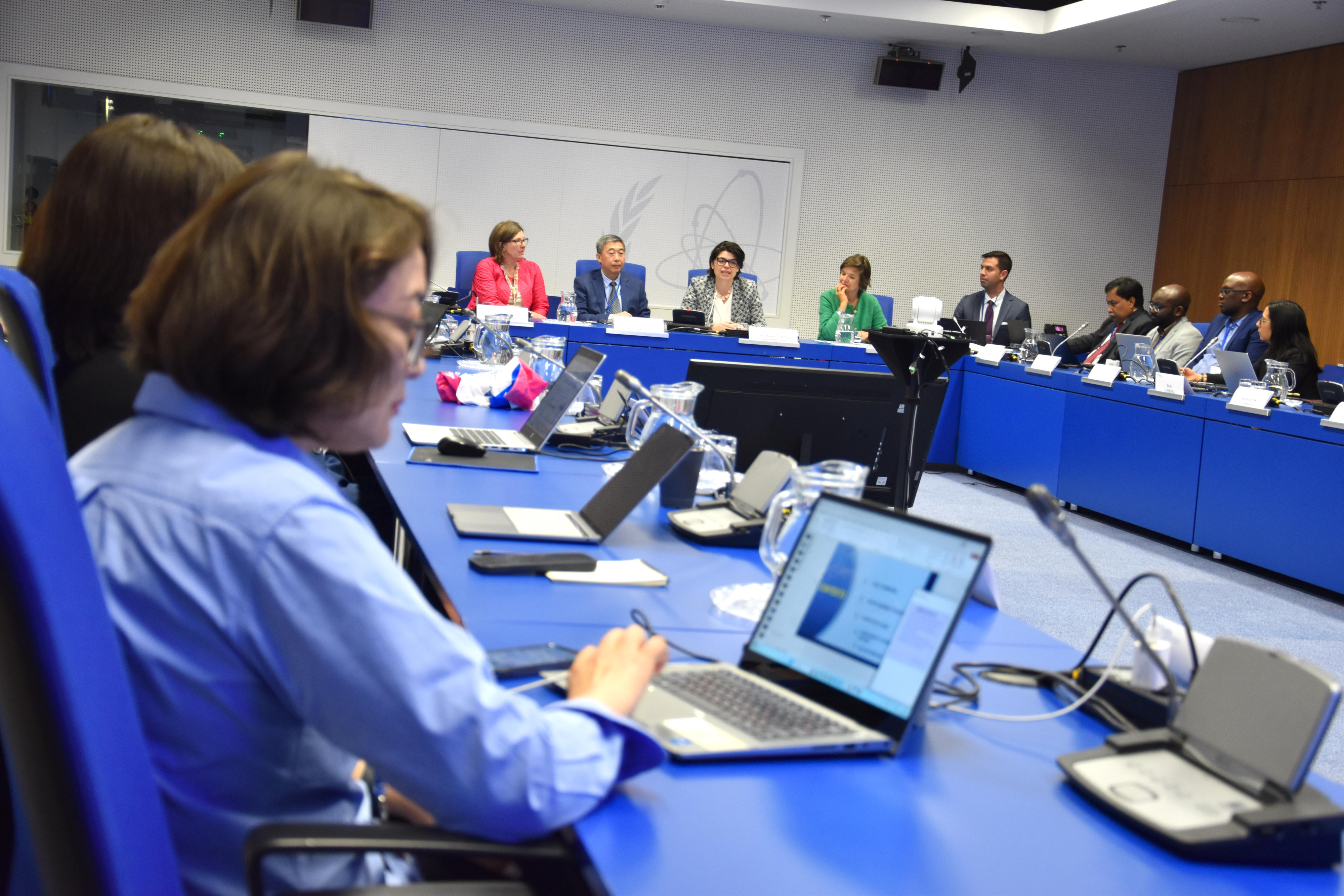The IAEA recently hosted its first workshop to help countries in the Asia- Pacific region develop strategic funding documents to expand access to nuclear medicine and radiotherapy; essential services to address the growing burden of cancer.
Held from 12 to 16 May 2025 at the IAEA Headquarters in Vienna, the workshop brought together multidisciplinary teams from Cambodia, Lebanon, Mongolia and Nepal. Participants included representatives from ministries of health and finance, cancer institutes and infrastructure authorities.
With new cancer cases expected to rise to 32.6 million by 2035, many countries are seeking to boost advanced nuclear medicine services to support early detection, such as Positron Emission Tomography (PET) – a scan that shows how organs and tissues work inside the body – and treatment.
While life-saving radiotherapy treatment can prove affordable in the long run, setup costs can be prohibitive for many low- and middle-income countries. Bankable documents help to bridge this gap by translating clinical needs into the language of ministries of finance, development finance institutions and private sector investors to unlock financing for these services.
“Lebanon is currently suffering from multiple crises, on top of very high rates of cancer,” said Hicham Ismail Fawaz, Chief of the Department of Hospitals and Dispensaries at Lebanon’s Ministry of Public Health during the workshop. “We aim to expand radiotherapy in public hospitals, which have seen a 40 per cent rise in demand for services in recent years as people can no longer afford private healthcare. A well-prepared document will allow us to reach multiple donors,” he added.
The workshop applied the IAEA’s methodology for generating investment-ready, country-specific proposals that weave together clinical justification, technical design, workforce planning, radiation-safety measures, cost modelling, digital-health integration and sustainability safeguards in a single, coherent package.
“More than 40 countries have benefited from the IAEA’s support in developing these documents,” said Lisa Stevens, Director of the IAEA’s Programme of Action for Cancer Therapy. “Through the Rays of Hope initiative, we have received additional requests for these financing tools as countries seek guidance and support in developing sustainable cancer care solutions.”
A bankable document offers three advantages:
- Credibility – the document is benchmarked against IAEA safety standards and international cost norms, giving ministries of finance and external lenders confidence in the projections.
- Efficiency – combines technical, regulatory and financial data to streamline inter-ministerial approvals and accelerates tendering and construction timelines.
- Sustainability – embedded training plans, preventive-maintenance schedules and phased-funding strategies safeguard long-term service delivery and maximise patient impact.
During the five days, national teams worked with IAEA experts in human health, radiation safety and related areas, covering topics such as cancer-burden mapping, equipment procurement, facility layout and shielding, PET-isotope production, routine maintenance, supply-chain resilience, and the use of tele-medicine platforms for treatment planning. Financial sessions showed teams how to forecast operating costs, quantify savings from reduced overseas referrals and demonstrate long-term affordability. Risk-management discussions captured regulatory, supply and human-resource uncertainties, ensuring proposals remain robust under different scenarios.
“This framework gives us a single, persuasive narrative—from patient numbers to pay-back period,” said workshop participant Kanchan Adhikari of Nepal’s National Academy of Medical Sciences, Bir Hospital. “It equips our health and finance ministries to move forward together on expanding radiotherapy and introducing PET/CT.”
Each national team left Vienna with an advanced draft that will be refined with IAEA support in the coming weeks, laying the groundwork for resource mobilisation and implementation.
“The effectiveness of these draft documents for unleashing development financing stems from their technical soundness, appropriateness and feasibility – a reflection of the IAEA’s decades-long experience and human health guidance which has helped countries to expand and establish their radiation medicine capabilities,” said May Abdel-Wahab, Director of the IAEA Division of Human Health. “Through the safe and effective use of nuclear technologies, we can expand the availability and quality of cancer care towards equitable access for all.”
